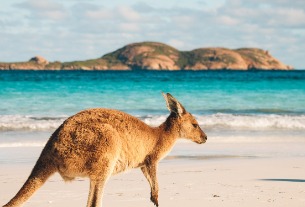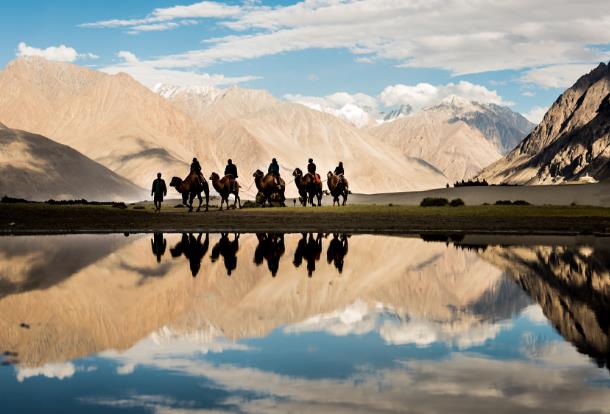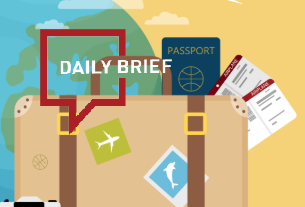I’ve spent the past four-and-a-bit years of my life working on marketing and selling technology solutions for the tours and activities industry. This time is more or less evenly split between my time as a founder and with TrekkSoft. Like many, I was attracted to the industry by the low online penetration and my personal experiences of not being able to book directly with tour operators and stressful phone calls and email chains to secure availability.
What I’ve learned is that the travel industry as we know it (air, lodging, car rental and cruise ships) has a strong technology backbone that has been wholesaling rates and availability between consumers, operators and agencies since the 1950s.
The $30 billion global distribution system (GDS) market is the indirect channel for travel. Traditionally the preserve of high street travel agencies, OTAs such as Priceline and Expedia now also rely heavily on it, generating almost $8 billion of bookings via GDSs.
For the consumer, metasearch services such as Skyscanner, Kayak, Trivago and even TripAdvisor have occupied a similar position, increasing the transparency for consumers in terms of pricing.
At the core of these systems, whether through scraping or integration, is some sort of electronic booking system.
What we know is that in tours and activities there is a major supply problem with a growing but still small proportion of the available inventory in reservation systems that can be connected to distribution systems.
The workaround has seen activity-focused online travel agencies such as Viator and GetYourGuide build large banks of database suppliers where they acquire and hold the inventory, which is a very expensive process that requires constant stock takes between the supplier and the consumer.
This is like going to the supermarket, selecting your item and waiting around to see if it’s actually in stock. This is why online travel agencies have focussed on major cities and free sale products such as hop on hop off tours.
The reality is that travel distribution is extremely consolidated. There are three primary GDSs, two dominant OTAs (Expedia and Priceline) and the airlines.
The hotel industry offers more diversity, but it is so fragmented and dependent on OTAs that it is hardly worth considering as a global distribution channel.
This all plays to what is known as Metcalfe’s Law, where the value of a network is worth the square of the number of connected users of the system.
This is what keeps GDSs and indeed OTAs relevant and it is very challenging for new entrants to disrupt them, unless you offer something completely different such as Airbnb in on-demand vacation rentals.
What is a GDS?
Simply put: a GDS is a network that enables automated transactions between travel service providers (mainly airlines, hotels and car rental companies) and travel agencies.
The first GDS was created in the 1950s in a project between American Airlines and IBM, which became one of the first ever enterprise software products.
Other airlines followed American’s lead, with United Airlines creating Apollo and Delta launching DATAS (both now part of Travelport).
Meanwhile in Europe, British Airways launched Travicom, consolidating 49 international airlines. Most of these assets ended up under the Travelport banner.
Amadeus was founded relatively late in the day, 1988, by a group of European airlines (Air France, Iberia, Lufthansa and SAS) as pretty much every travel agency had become dependent on the American GDSs for inventory. Controversy around whether the owning airlines were able to manipulate flight listings in favour of their own products, much like Google is accused of doing so today, was never far away.
Eventually, the GDSs were spun out from their parent airlines, creating the structure we have today, where there are just three global competitors, namely Amadeus, Sabre and Travelport.
Web of change
The internet changed the game — no longer were airlines solely dependent on the indirect channel, they could now invest in their own websites to drive direct sales. Low-cost carriers such as Ryanair and Easyjet almost exclusively followed this approach. This weakened the bargaining power of the GDSs and traditional agencies, as airlines now had a realistic alternative.
GDSs reacted to this by investing in online travel agencies (unleashing the beast) e.g. Amadeus/Opodo, Sabre/Travelocity, Travelport/Orbitz.
However, intense B2C competition emerged as one reason why the GDSs divested these businesses and focussed on high-yielding corporate travel, traditional travel agencies and software services primarily for airlines.
The internet also spawned new technologies that offered alternatives to GDSs such as ITA/Google Flight Search, metasearch for retail bookings (Kayak, Skyscanner) and the expansion of the GDSs to accommodation and the provision of channel management products to access them.
What can GDSs do for tours and activities?
What would having access to the GDSs mean for activities? It would provide a large network to distribute individual suppliers’ products. This would mean that online travel agencies, airlines and hotels could focus more on their core customers and easily sell activities as an ancillary product at the right time for their customers.
It would give them access to a truly global bank of inventory and eliminate their need to acquire and hold inventory.
For this to happen, more suppliers need to be using electronic booking systems, preferably with third parties, so the costs are low for tools like channel management. Then, these B2B software applications can connect to the larger distributors and the distributors, in turn, can offer their inventory to a host of new mobile and web applications, hotels and any number of innovative services.
At the moment, it’s overly intermediated with too little inventory – the supplier lists on the OTA, the OTA distributes to the GDS and the GDS onward sells the inventory. Most of this inventory is not in real-time nor does it have a large geographic spread. With the result that OTAs generate just 4% of the overall booking volume of a $100 billion+ market.
Where are we now and how can tour operator software help?
The pace of change has been slow, but steps towards a similar path to the mainstream travel industry are quietly happening in activities.
B2B technology companies are offering channel management services to their clients. This is primarily focussed on integrating with the likes of Viator/TripAdvisor and Expedia, who in turn are selling this inventory with consumers and with B2B partners.
The distribution landscape is progressing for tours and activities, and as demand grows from consumers so does the need for supply. Here, B2B activity software companies have much to gain by working together. This is for two reasons. Firstly, as we know from Metcalfe’s law, the value of a network comes from the number of connected users. Secondly, grouping together will help create a unified standard, lowering the cost for integration for channel partners and increasing bargaining power.
Read Original Article




